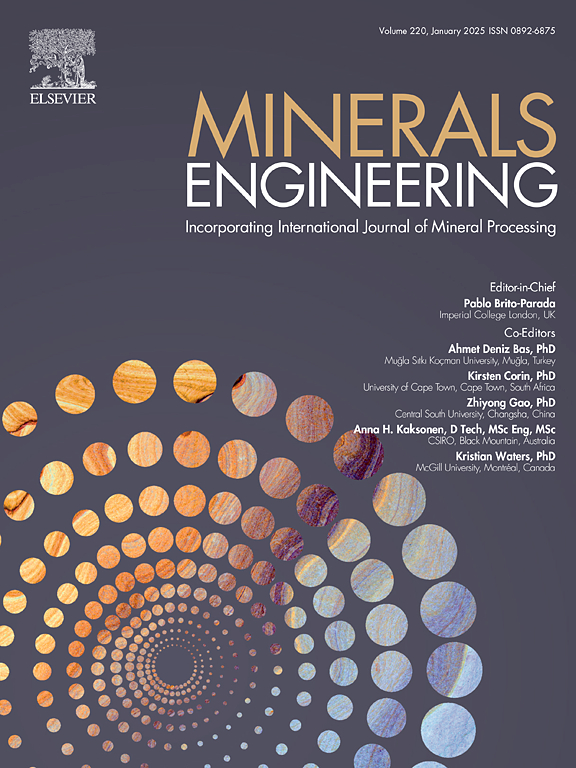基于ZnO/活性炭复合材料的浮选气体传感器
IF 4.9
2区 工程技术
Q1 ENGINEERING, CHEMICAL
引用次数: 0
摘要
目前,对矿山浮选过程中产生的气体还缺乏监测。由于这些低浓度气体主要由浮选药剂产生,单金属氧化物半导体基气体传感器难以满足使用要求。活性炭是一种价格低廉、应用广泛的多孔材料,可使足够的浮选气体吸附在气敏材料表面,明显改变传感器的电导率。本文采用一锅水热法合成了ZnO/活性炭复合材料。采用XRD、FESEM、TEM、拉曼光谱、XPS和BET对样品的晶体结构、形貌、纳米尺寸和化学成分进行了表征。结果表明,基于ZnO/活性炭复合材料的气敏材料能够检测丁基黄药和松油醇等浮选气体。基于ZnO/活性炭(10/1.5)复合材料的气敏传感器在75℃下对1 ppm丁黄药气体的响应值为28.90,在100℃下对0.5 ppm松油醇气体的响应值为8.67,重现性较好,具有实际检测浮选气体的潜力。本文章由计算机程序翻译,如有差异,请以英文原文为准。
ZnO/activated carbon composites based gas sensor for flotation gases detection
At present, there is still a lack of monitoring of the gases produced in the flotation process in mines. As these gases with low concentration are mainly produced by flotation reagents, and the single metal oxide semiconductor based gas sensors are difficult to meet the requirements of use. Activated carbon is a porous material that is cheap and widely available, which can make enough flotation gases adsorb on the surface of gas sensing materials and change the sensor’s conductivity obviously. In this work, ZnO/activated carbon composites were synthesized by a facile one-pot hydrothermal method. The crystal structure, morphology, nanosize and chemical composition of the samples were investigated by XRD, FESEM, TEM, Raman spectroscopy, XPS and BET, respectively. The results showed that the gas sensing materials based on ZnO/activated carbon composites were able to detect the flotation gases such as butyl xanthate and terpineol. The gas sensor based on ZnO/activated carbon (10/1.5) composite reached the best response value of 28.90 at 75 ℃ for 1 ppm butyl xanthate gas, 8.67 at 100 ℃ for 0.5 ppm terpineol gas, as well as good reproducibility, which is potential for practical detection of flotation gases.
求助全文
通过发布文献求助,成功后即可免费获取论文全文。
去求助
来源期刊

Minerals Engineering
工程技术-工程:化工
CiteScore
8.70
自引率
18.80%
发文量
519
审稿时长
81 days
期刊介绍:
The purpose of the journal is to provide for the rapid publication of topical papers featuring the latest developments in the allied fields of mineral processing and extractive metallurgy. Its wide ranging coverage of research and practical (operating) topics includes physical separation methods, such as comminution, flotation concentration and dewatering, chemical methods such as bio-, hydro-, and electro-metallurgy, analytical techniques, process control, simulation and instrumentation, and mineralogical aspects of processing. Environmental issues, particularly those pertaining to sustainable development, will also be strongly covered.
 求助内容:
求助内容: 应助结果提醒方式:
应助结果提醒方式:


